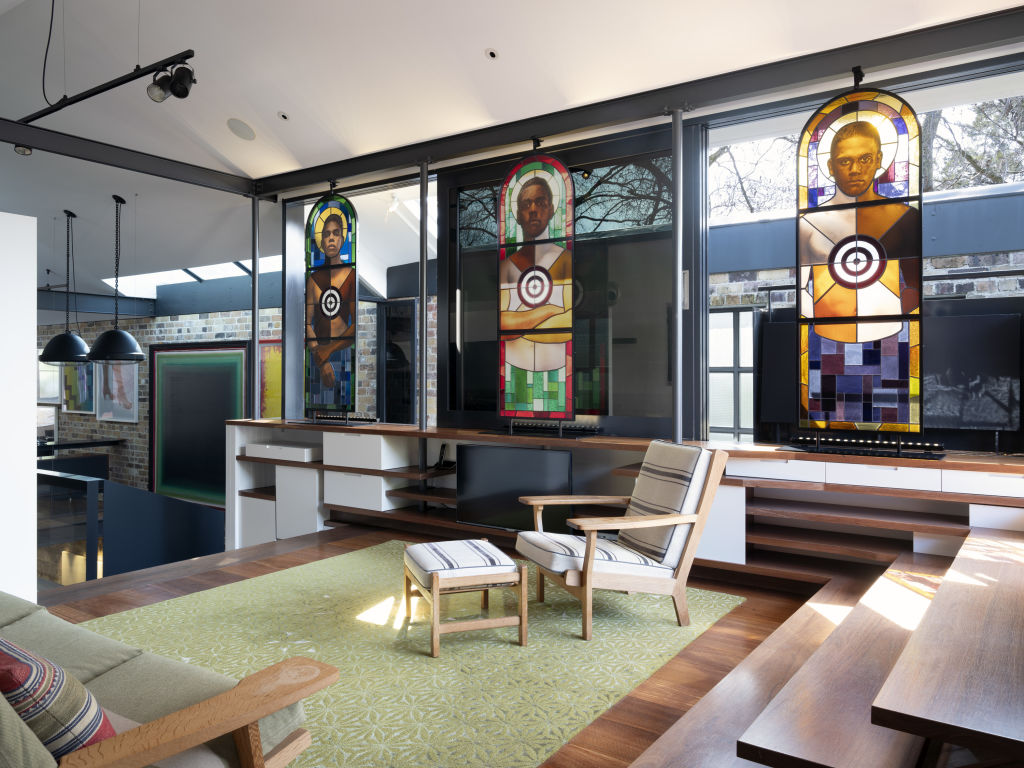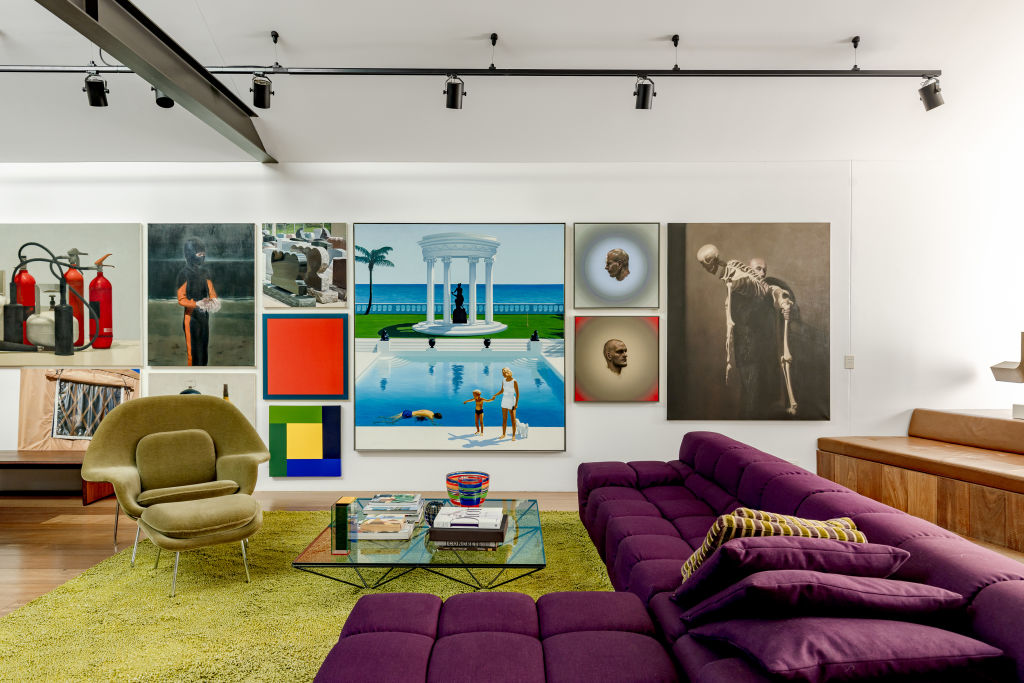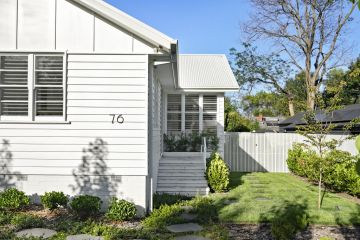Modern Surry Hills 'art-gallery' home for sale once a tractor showroom

In the eclectic heart of Surry Hills, 464 Bourke Street is a rebellious testament to transformation – once a warehouse, tractor showroom, mechanics garage, and the infamous Sydney Labour Club. With a history as colourful as the neighbourhood itself, this building has worn more hats than a well-travelled bohemian.
Today, it’s home to Andrew Goy and Patrick Teng, a place where history and modern design dance in harmonious defiance. Goy fondly recalls the moment he stumbled upon it.

“I moved to Sydney in 1979 and spent years bouncing between houses, constantly renovating, always trying to make something fit,” Goy recalls. “The search for a space with real volume eventually led to this listed warehouse, then owned by the South Sydney Graphic Arts Club.”
Over four transformative years, Goy, together with his designer-architect and builder, embarked on an ambitious architectural rebirth. What began as a “two-storey box” was reimagined through the concept of a “building within a building”, a design that invited natural light.

“This involved strategically removing sections to create a front entrance and an internal courtyard, which required extensive structural reinforcement inside and out,” Goy explains. “Now, every room is illuminated, with the excised sections and skylights providing light and ventilation throughout, while bridges and platforms link sections of the residence.”
Though the warehouse isn’t heritage-listed, Surry Hills is a heritage area. Goy was determined to preserve the building’s industrial roots, treating the conversion as a love letter to Sydney’s architectural history.

“Render was removed to expose the brickwork, and we retained the original apertures – windows, doors, garage – and even maintained the ziggurat configuration of the Bourke and Marshall streets facade,” he says.
During this meticulous process, a piece of the building’s story resurfaced. As the render was stripped away, painted signage from its past life as the Super Transport Company and the words ‘car service’ emerged, hidden relics that have been proudly preserved.

“I even tried to keep the graffitied bathroom wall panels, hoping to use them somewhere as a tribute to the building’s colourful history,” says Goy. “Unfortunately, they were in such poor condition that they couldn’t be used.”
Every corner of this home honours its industrial roots while basking in the glow of modern elegance. Here, life unfolds alongside Goy’s extensive art collection. Each piece finds its place, from realism to hyperrealism, abstract to conceptual, Indigenous to sculpture – both indoors and out. Even the purpose-built art storage room stands ready to house the artworks awaiting their turn in the spotlight.

“My collecting journey began some 40 years ago, with no deaccession – it’s like a diary that grew organically,” he says. “I enjoy living with art and sharing it with others. It’s always amusing when people come to the house for the first time and ask if it’s an art gallery.”
Indeed, his art collection is woven into the very fabric of the home. Each piece is carefully placed to create a dialogue with its surroundings. At the entrance, Robert Klippel’s bronze sculpture, Sentinel, stands watch, setting the tone for the brilliance within.

While the property’s refined architecture crafts a tranquil and private home, complete with artworks that demand quiet contemplation, the house isn’t all serious – it’s seen its fair share of laughter and revelry, too. After all, this was once where live music reverberated off the vermiculite ceiling, where many of Goy’s friends recall gathering “back in the day”.
“The house remains great for entertaining, and we’ve certainly had our own share of fun here during the many parties over the last 16 years,” he adds. “The most memorable was the initial house-warming party in 2012 – such a relief after no one thought the rebuild would ever finish. Friends and family came from all over, and it was a night to remember.”

As Goy’s lifestyle shifts, working less and with more flexibility, the moment has arrived to pass the torch after 16 years of nurturing this extraordinary building.
“Yes, it’s emotional. There’s so much of me in this house and its contents,” he reflects. “It’s taken two years to finally decide to sell, but it feels like the right time.”

No. 464 Bourke Street – a space where creativity knows no bounds and history is an ever-present companion – awaits its new chapter. The question of who its next custodian will be remains open, as does the future home of Goy’s art collection.
“There are a number of options for the art collection, none of which are definite at this stage,” he says. “Needless to say, it will remain in my life in some way.”
We recommend
We thought you might like
States
Capital Cities
Capital Cities - Rentals
Popular Areas
Allhomes
More
- © 2025, CoStar Group Inc.










